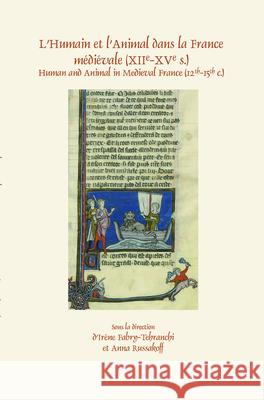L'Humain Et L'Animal Dans La France Medievale (Xiie-Xve S.): Human and Animal in Medieval France (12th-15th C.) » książka
L'Humain Et L'Animal Dans La France Medievale (Xiie-Xve S.): Human and Animal in Medieval France (12th-15th C.)
ISBN-13: 9789042038653 / Angielski / Miękka / 2014 / 232 str.
L'Humain Et L'Animal Dans La France Medievale (Xiie-Xve S.): Human and Animal in Medieval France (12th-15th C.)
ISBN-13: 9789042038653 / Angielski / Miękka / 2014 / 232 str.
(netto: 246,29 VAT: 5%)
Najniższa cena z 30 dni: 258,60
ok. 30 dni roboczych
Dostawa w 2026 r.
Darmowa dostawa!
Ce recueil explore les relations mouvantes entre hommes et animaux, aussi bien reels que fantastiques, dans la France medievale, dans une perspective interdisciplinaire. Les auteurs examinent la facon dont le rapport humain-animal a ete imagine, defini et remodele dans la pensee, la culture et la production artistique du Moyen Age. La distinction entre l'humain et l'animal, fondamentale dans le texte biblique et la philosophie antique, a ete remise en question au cours du XIIe siecle. Ce phenomene transparait dans la terminologie utilisee pour designer les animaux, dans leur representation dans les arts et la litterature, et dans l'evolution de textes fondamentaux comme le Physiologus ou les bestiaires. Les frontieres entre le monde humain et animal, fondees sur des criteres comme la maitrise du langage, la capacite a rire ou la responsabilite legale, ont profondement evolue et ete remises en cause entre le XIIe et le XVe siecle. This is the first volume that explores the changing relationships between humans and animals, both real and fantastic, in medieval France, from a completely interdisciplinary perspective. The authors examine the way the human-animal rapport was imagined, defined and remodeled in thought, culture and artistic production. The distinction between human and animal, fundamental in the Bible and in Ancient philosophy, was challenged throughout the course of the 12th century. This phenomenon can be traced in changes in the terminology used to designate animals, in their representations in the arts and literature, and in the reworking of fundamental texts such as the Physiologus and the bestiaries. The borders between the human and the animal world, based on criteria such as linguistic ability, the capacity to laugh and even legal responsibility, evolved and were fundamentally reconsidered between the 12th and the 15th century.











